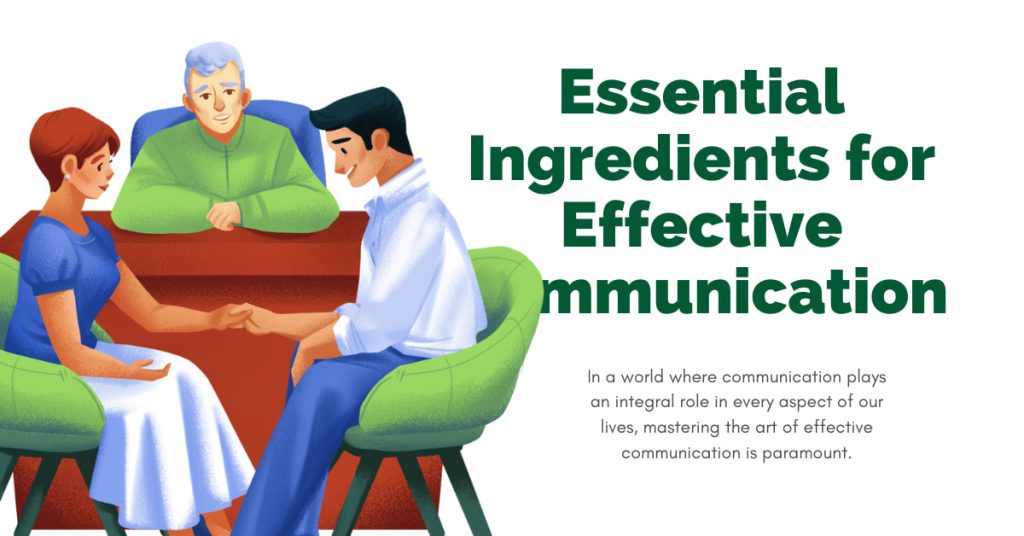In a world where communication plays an integral role in every aspect of our lives, mastering the art of effective communication is paramount. Whether it’s in personal relationships, professional environments, or societal interactions, good communication serves as the cornerstone for understanding, collaboration, and progress. But what exactly constitutes good communication, and how can we excel in this essential skill?
Understanding the Essence of Good Communication
At its core, good communication is not just about conveying information but also about ensuring that the message is understood clearly, accurately, and empathetically. It involves active listening, clarity of expression, and the ability to adapt communication styles to suit different contexts and audiences.
Key Ingredients for Successful Communication
- Active Listening
- Clarity and Conciseness
- Empathy and Understanding
- Adaptability
- Feedback and Clarification
- Respect and Courtesy
1. Active Listening
Effective communication begins with attentive listening. This means giving the speaker your full focus, maintaining eye contact, and refraining from interrupting. Active listening involves not only hearing the words but also understanding the underlying emotions, concerns, and perspectives conveyed by the speaker.
2. Clarity and Conciseness
Clear and concise communication minimizes the chances of misunderstandings or misinterpretations. When conveying a message, strive for simplicity and brevity, avoiding jargon or overly complex language. Break down information into digestible chunks, and use examples or visuals to enhance understanding whenever possible.
3. Empathy and Understanding
Empathy lies at the heart of good communication. Seek to understand the thoughts, feelings, and motivations of others, and respond with compassion and sensitivity. Acknowledge their perspectives, validate their emotions, and demonstrate genuine concern for their well-being. Empathetic communication fosters trust, strengthens relationships, and promotes mutual respect.
4. Adaptability
Effective communicators recognize that different situations and individuals may require different approaches. Be flexible in your communication style, adjusting your tone, language, and delivery based on the context and preferences of your audience. Adaptability enables you to connect with diverse groups of people and ensures that your message resonates effectively.
5. Feedback and Clarification
Encourage feedback and clarification to ensure mutual understanding. Invite others to ask questions, share their thoughts, and express any concerns or uncertainties they may have. Clarify ambiguities, address misconceptions, and provide additional context as needed. Open dialogue fosters transparency, minimizes misunderstandings, and promotes collaborative problem-solving.
6. Respect and Courtesy
Good communication is grounded in respect and courtesy for others. Maintain a positive and respectful demeanor, even in challenging or contentious situations. Avoid sarcasm, condescension, or hostility, and strive to communicate with kindness, patience, and professionalism. Respectful communication builds trust, cultivates goodwill, and lays the foundation for constructive relationships.
In a world inundated with communication channels, mastering the art of effective communication is both a skill and a lifelong endeavor. By cultivating active listening, clarity of expression, empathy, adaptability, and respect, individuals can enhance their communication prowess and foster meaningful connections with others. Whether in personal interactions, professional endeavors, or societal engagements, the principles of good communication serve as guiding beacons, illuminating pathways to understanding, collaboration, and harmony. So, let us endeavor to communicate not just with words, but with empathy, understanding, and sincerity, for therein lies the essence of true connection and communion.






